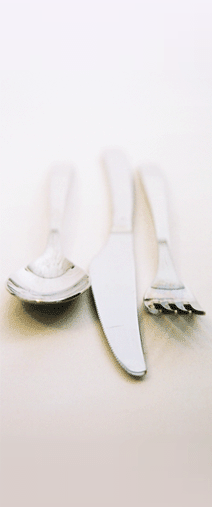Lost in Translation One
April 25, 2005
14:52 PM
Because there is a strong tradition of using French as the language of professional food there always has been a tendency to get the French words wrong in menus.
Somehow the translations never quite work.
Dutch Sauce does not sound like it would have anything of the buttery richness redolent in “Sauce Hollandaise”, something called “Skewered Lamb Nuts” doesn’t have the same ring as “Noisettes d’Agneau en Brochettes” and one would not wonder at Profiteroles made from “Cabbage paste” not having the same airy lightness as those made from “Pate A Choux.”
To compound out difficulties the naming of dishes in France has quite often been done by people whose love of the food they were producing was often to lead them close to poetry.
A fresh green herb sauce for fish is known as “Sauce Vert Pre” –green meadow sauce, a simple butter and lemon garnish for Trout or Sole is known as “A la Belle Meuniere”-in the style of the beautiful millers wife.
Because of the supposed soporific effect of Lettuce, soup made from that plant was called “Potage Pere Tranquille” or a soup to quieten Father. This has always brought to mind our own folk song ;The Spinning Wheel.
In the song the mother was sent to sleep by the hum of the spinning wheel as spun by her daughter aware of her lover waiting outside the window, the French daughter of course relied on food to quieten Father, and fed him on lettuce soup before making her escape. The effect however is the same in both;
“Noiseless and light to the lattice above her
The maid steps, then leaps to the arms of her lover.”
But for pure poetry I have to go back to my cookery muse, Elizabeth David.
In French Provincial Cooking she names a melon Ice cream “Glace au Melon de l’Isle St. St Jacques” because:
“The melon has a strange almost magic flavour and that is why I have called it after that French Caribbean Island so unforgettebly conjured out of the ocean, only to be once more submerged, by Patrick Leigh Fermor in “The Violins of St Jacques”.
The French nomenclature has left us with a very useful shorthand of typical garnishes for foods. We can all be pretty sure that “A La Provencal” will contain at least tomatoes and possibly garlic and black olives as well. Dishes served “A La Lyonnaise “ will contain onions. “A La Bourguignonne” will certainly contain red wine, “Normandie” cream, with a strong possibility of apples or cider.
They did not however stop at naming dishes after their own provinces.
We have already mentioned the Dutch, the Italians were, for some reason given “A garnish of chopped Mushrooms” The Hungarians, more understandably Paprika. A l’Indienne is the French description of a Curry which is one example of them getting the name right but never quite managing to perfect the spicing. I always think that the English have a much better handle on this dish than the French, probably because of their colonial background in India.
The French however gave the British very little credit for culinary expertise, “A l’Anglais” refers to something boiled in water.
The Germans and Spaniards fared much better, the former having a classic Veloute sauce enriched with egg yolks and cream named in their honour, the latter having Sauce Espagnol, one of the great Sauces Meres of French cooking called after them. One can search in vain in the Larousse Gastronimique for an “A l’Irlandaise. We can however make a tenuous connection with Mayonnaise, supposedly first prepared for a certain General Mahon by his chef. Definitely a man of Irish extraction.
Talking of Irish extraction it is very interesting to note that we can claim to have a half share in the Swedish royal house.
Napoleon’s marshal Bernadotte was tactically granted the Swedish throne by the Swedish people when their monarch died without heir. The same Bernadotte had married Desire Clary, an old squeeze of Bonies, who’s parents were involved in the silk trade in Marseilles and were originally Clearys from the west of Ireland.
To get back to the point, the problems involved in getting the French names correct on our menus often gives us amazing dishes.
I have seen the “belle meuniere” mentioned above offered as “Sole Manure”,and, in the sixties, when they were still a novelty, a friend was offered “Koo-Jets” in a Kilkenny restaurant. She was delighted when they turned out to be courgettes. Another friend when she requested a “Mille Feuille” pronounced in the French manner was gently corrected by a waitress who told her it was a “Milly Filly”, I’m not at all sure that that wasn’t an improvement.
But my own two favourite pieces of menu mistakes come from the time when I was working as a waiter in Barley Cove Hotel in West Cork.
Seeing the giggles of a table of city people one lunch time I discovered that the reception had gotten the “Buttered Peas” on the vegetable offerings wrong, somebody’s finger had slipped down a line and they had become “Buggered Peas”- the mind boggles!
However the same typist bettered even that when , the following week,one of the desserts on offer was the wonderful option;
“Lemon Meringue Piss”.
Scallops Torrades
April 21, 2005
13:42 PM
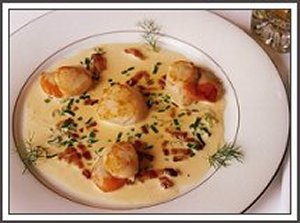
Just over two years ago Euro-Toques, the Organisation of European Chefs, approached me and asked would I go to Brussels to cook some typically Irish dishes in the European House of Parliament .
This was for an annual event, organised by Euro-Toques, in which member countries could showcase their native dishes at what they called a cocktail party.
Euro-Toques had asked myself, Brid Torrades from Sligo and Ross Lewis of Chapter One in Dublin to cook and present the food at this event. Ross, who was our Commissioner General at the time , had to cry off at the last minute due to illness so all that remained was Brid, myself and a large insulated coffin sized box of the very best of Irish food and drink.
After some adventures and payment of an additional €250 to Ryan Air for excess baggage for the coffin, we struggled into the parliament building and unloaded our box in the vast kitchens where all the preparations were to happen.
I think it was only then that we realised that we had no notion what on earth we were going to do with the food in the coffin. It wasn’t until we opened it that we knew for sure what was inside. Ross had of course painstakingly gathered together the most wonderful fresh Irish ingredients but the recipes of how they were to be put together were with him in his sick bed in Dublin.
In the meantime we were surrounded by splendid activity as 12 European countries’ teams of chefs busied themselves getting ready their dishes for the party. These were serious teams, some like the Italians had as many as 12 members, some like the Germans had dirndl clad madchen to serve their food, the Belgians even had a Hot Chocolate Fountain which they were assembling. We had to think fast and on our feet if we weren’t going to disgrace our native land.
On examination the coffin was full of the most fantastic goodies.
There were wonderful farmhouse cheeses, no problem with them they could stand alone, as could the bottles of Baileys Irish Cream and the 12 year old Irish Malt Whiskey, the wild smoked Salmon just had to be sliced and put out on trays, but, what were we going to do with the bags of scallops, still beautifully fresh and smelling of the sea.
Ross had mentioned something about wrapping them in rashers of bacon and grilling them. That notion seemed just too fiddly to Brid and myself, and would the delicate scallops be over cooked by the time the bacon was crisp?
A combination of Brid, Myself and Desperation (an even more maternal agent than necessity in the conception of inventions) came up very quickly with the method of cooking the scallops.
We diced and crisped the streaky rashers on a good heat and put to one side. We trimmed the scallops and used the trimmings to make a stock.
Then we seared the scallops on a hot pan, deglazed with some 12 year old Irish Whiskey, added some cream which we had wheedled from the parliament chefs and then reduced until thickened and so was born one of the most delicious methods of cooking scallops that I know .
I’m not alone in this , we created quite a stir at the “Cocktail” with our scallops dish. There was a queue at all times at the Irish Stand as the word got around about the “ delicieux Coquilles St Jacques Irlandaise”.
In the end despite our chronic lack of manpower the Irish stand made a very creditable showing. We even managed to get a good press as the Fine Gael MEP Mary Banotti, who had been at a cookery class I had run, brought over all her MEP friends to sample our wares and created the kind of buzz around the Irish stand which made even the press interested.
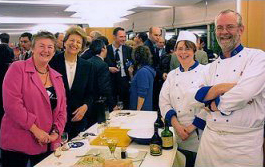
Mary Banotti, English MEP Baroness Nicholson, Brid Torrades and M.D.
A good chef is an economical person and there was no way that this delicious method of cooking scallops was going to be let die on one, admittedly fairly illustrious, outing.
Back in Waterford and in the kitchen in Dwyers I decided to put this method of cooking scallops on my menu. As Brid Torrades was certainly the second parent of this dish (and Desperation the midwife) I thought I should call it after her. So Scallops Torrades was born.
It was a hit, also it made a great talking point with customers, who only had to say “What does Torrades mean?” to be given the full story.
I even created variations on the “Torrades” theme with dishes like Turbot Torrades which was poached turbot served with the same scallops.
It has also travelled well. Type “Torrades” into Google and the first hit you will get will be my recipe. Type in “Scallops Torrades” and you will see that it has become a staple in restaurants as far afield as Hong Kong and Michigan. Do I mind ? Not at all. I’m flattered and delighted.
Last week Brid and myself were again asked to cook in the Brussels Parliament house for the “Euro-Toque Cocktail”.
No need to tell you, I’m sure, that we brought copious supplies of scallops, bacon and whiskey (Jameson’s 12 year old this time.)
This time we had Abigail Colleran, Bocuse d’Or Prize winner, and Brid’s daughter Fiona to help us so it was much less fraught and we did know in advance what we were going to cook.
Scallops Torrades was again a great success.
The crowning moment of the day was when the Euro-Toque general secretary, Bernard Fournier, came around with the EU fisheries minister and stopped at our stand.
“Ah!” they said “The wonderful Irish Scallops and whiskey dish” (as they tucked in). “It is such a wonderful traditional dish isn’t it”
Brid and I nodded mutely.
Back to the Eating Board
April 15, 2005
12:30 PM

Talk to anyone of my generation (born in the forties or fifties) about their daily meals and you will get a remarkably similar answer.
We all ate very much the same food.
Breakfast was porridge or cornflakes with toast ( a fry at the weekends maybe) lunch (dinner as it was called then) was the main meal of the day.
This meal was provided from a certain and limited repertoire of dishes.
On Mondays and Tuesdays we often ate reheats from the remains of the Sunday roast, like Shepherds Pie, Curry (at least my mothers notion of same) or what were called Rissoles -these were a strange combination of leftover Sunday joint, minced, mixed with mashed potato and onion, coated in egg and breadcrumbs and fried.
(Come to think of it those were pretty darn good .)
Otherwise we ate a certain amount of stews,Steak and Kidney ,or Irish. We frequently ate Lamb or Pork chops (with Mint Sauce or Apple Sauce), Boiled Bacon and Cabbage, the odd offal fix from Lambs Liver and the ubiquitous Friday meal of Plaice (always bloody Plaice) which was produced penitentially, with offers of a fried egg as an alternative if you felt it was just too awful.
This main meal was usually followed by a pudding. Let us not be coy about this, it was not a sweet or a dessert, it was a rib sticking , high density, glutinous, farinaceous pudding. This could have been Marmalade Pudding. Queen of Pudding, Apple Pudding and some that I have spent a lot of time trying to forget like Tapioca, Semolina, or Rice Pudding.
The tea or supper, as the evening meal was then known, was a much lighter and more informal affair, not surprising after that lunch.
For this there were two basic alternatives.
During the winter, we would have variations of what would be now seen as breakfast food.
This was frequently a “Fry” but at lean moments could be eggs (boiled, fried, poached or scrambled) and was always accompanied by as much as you could eat of bread, butter and jam, with it you drank tea, but only when you got to your teens, before that age the compulsory tipple was milk.
In the Summer any thoughts of change or variety were abandoned and from some time in May to late September we faced the inevitability of “The Salad”.
This, largely unvarying concoction consisted of ; a few slices of cold ham, (shop) 4/5 leaves of lettuce (undressed), 2 tomatoes, maybe a scallion or two, maybe a tablespoon of pickled beetroot (shop), often a hard boiled egg but always a tablespoon of a strange and acid and pale sauce known as “Salad Cream”.
Weekends were variations of the same except for the sacred Sunday Lunch. This was usually a roast of Beef, Pork or Lamb. The odd boiling of Chicken and Ham with parsley sauce was also OK as well as that forgotten meat Mutton which came boiled with Caper Sauce.
The entire repertoire of the cook, inevitably the Mammy, was about 30 to 40 recipes of meat and vegetables. Her principal failing was that the vegetables, meat and fish were usually overcooked.
But please don’t think that we didn’t enjoy it.
It may not have been what we would now see as great cooking but all meals were anticipated with relish and devoured with appetite.
Nowadays the choice of fresh foods are infinitely better.
In our own local shops , supermarkets and markets we have choices of fresh foods which our mothers would have died for.
So what are our young people eating today?
They are eating pre packaged, over processed, over seasoned and sweetened
factory produced convenience foods.
Anyone who has watched Jamie Oliver’s couragous “Jamies Dinners” over the last weeks will know the effects such a diet has on childrens digestion, health, and behaviour. For all its inevitability we were ,as children, eating a healthy mixed and well balanced diet.
What we ate was full of the requisite balance of protein, carbohydrate and fat and, as is obvious today, perfect for creating citizens (like me and you) who are healthy, wealthy and wise .
These flawed, but real, meals were eaten by a family together around a table -this being the very cradle and hearthstone of civilization.
To digress back to these cradle days, man the hunter became civilized when he started to form packs and hunt in groups. The next steps of shared cooking and shared eating led to the the communal meal and, the theory goes, from that moment came the birth of language. With language man was to attain a level of intellect which placed him in a special position above other animals.
The present time offers a threat which other, perhaps less sophisticated ages never offered to this very cradle of civilization.
Man, due in no small part to our busy modern affluent lives,is, paradoxically, moving back to that moment of prehistoric time when he grazed, hunted and, therefore, dined alone.
When we permit our children to make their own choices of what they eat they will head unerringly for the easiest and most immediate taste hit.
Our taste buds, like all our other senses, need education. It was not for nothing that we spent such a long time trying to encourage our toddlers, spoon in hand and mouth (ours) wide open, to eat what we felt would be good for them. What a shame then if we let that groundwork be wasted by letting them , once they get big enough to operate a microwave, have free rein over what they eat.
Appetites educated on the high sugar, high flavour foods which hide under the label of convenience will never will never enjoy the gentle subtlety of crunching into juicy asparagus, or relish the mouthful of the ocean which is an oyster.
I am sure we all remember the initial reaction to certain foods, enjoyed by our parents, which seemed revolting to us. For example one of my favourite treats today is a glass of dry red wine and some strong cheese after a meal. As a child I was horrified with my parents for eating anything so disgusting, but, anxious to please and emulate, I learned over time to appreciate and love these flavours as well.
Question: In what academy of culinary arts did I make this breakthrough?
Answer: The Dining Table.
It can only be thus that we educate our children to appreciate the finer tastes in life. By supervising what they eat and encouraging them to try new and rewarding tastes and textures.
So can we all, within the privacy of our own homes, strike a blow against the dumbing down of food and the arrival of multi national food factories and short order cafes whose only ambition is to get our children’s tastes developed to a controlled predictable uniformity so that they can become the sole suppliers of their food.
Lets start a revolt against this in our dining rooms.
Lets get back to eating together at the table.
1 comment.
Roasted
April 12, 2005
20:41 PM

This is me, getting roasted, on last Sundays Observer
The Magic Flute
April 11, 2005
09:43 AM
Die Zauberflote
Even though I was born and reared in Cork, a very musical city, I was never really an opera person.
Thanks to the pioneering spirits of Aloys Fleischmann and Joan Denise Moriarty the arts of classical music and dance were well catered for in Cork with institutions like the Cork Orchestral Society and the Cork Ballet Company.
On the Opera front however things were not so impressive.
We were fed large quantities of various light operas, there was always a good house for Merry Widows, Student Princes and anything by Gilbert and Sullivan. To lower the brow a little musicals comedies, especially those by Rogers and Hammerstein were always popular and much loved (by me too, I must say.)
I do remember a terrific production of Traviata in the Palace Theatre and there were, I am sure some others, but, on the whole I think Opera was the poor relation of the performing arts in Cork. Consequently I was fairly ignorant of, and imagined I would be bored by Opera.
My first contact with opera, as an adult, which began to break down this apathetic disinterest, was with Ingmar Bergman’s production of Mozart’s Magic Flute which and I saw on the television on RTE 1 in the late Seventies.
This fabulous production made me a fan, but only of this particular opera.
My relationship with opera has followed a pattern since of really having to listen many times to an opera before the familiarity breeds respect.
I now have a repertoire of probably only six that I truly like but look forward, with much anticipation ,to getting to know some others.
The Magic Flute has however a very special position as my first opera.
Over the years we have managed to come across quite a few productions. Starting with the Bergman, which we have on Video, we also have a, much edited , version from Glyndebourne on Video, we saw a concert version one afternoon in Wexford and, memorably, saw a lavish
and epic production in the Theatre Antique in Orange about 4 years ago.
We also have a stellar production on CD from Deutsche Grammophon which has Deitrich Fischer-Dieskau singing my personal best ever Papageno. This particular double CD set has the most marvellous journey shortening effect when played on the car stereo.
We nearly made it to a production in the Royal Festival Hall some time in the early nineties. We had the tickets, the ferry and our accommodation booked when my chef at the time did the unforgivable and got ill enough to end up in hospital with mysterious virus and all was cancelled. (My feelings of charity to said chef on that occasion had to be dredged , with difficulty, from the very bottom of my immortal soul)
I was finally rewarded for this act of charity this year when I discovered that Opera Ireland were putting on a production of my personal favourite in Dublin this April. I booked my tickets, on the internet, on the very day I first saw it advertised and finally saw this production last Friday.
It was well worth it, both the wait and the long familiarisation.
The production, which was both directed and designed by Achim Freyer from Germany, was truly off the wall.
The birds belonging to the bird catcher Papageno, were rubber ducks, which he inflated with a hand pump as he sang. His Monster was a large inflated snake from which the three ladies, fetchingly dressed in blue body stockings with bathing suits painted on top, saved him by deflating it.
The deceptively simple looking set of three doors, painted by as if by a child, proved to have a myriad variations of usage and opening.
There were elements of Commedia d’ell Arte,street theatre, the circus, slapstick cinema, and just about any theatrical device you could imagine.
Papageno even got great belly laughs throughout the show by producing a little red bird from his fly at opportune moments- it was that sort of production.
The music wasn’t put into second place though. Our own Ailish Tynan who sang Pamina was in great voice, as was Tamino, and the Queen of the Night, if a little wobbly on her lower notes, gave us coloratura trills on the high bits which, as my brother in law Martin Lyes said “ would take the lining off a Teflon pan”.
This, if not a production for purists, (I heard one man, outside the theatre, say it was “a disgrace”) was a great crowd pleaser and put opera right back where it should be in the realm of popular musical theatre.
The great thing about The Magic Flute is that-as if to anticipate the techniques of the writers of Broadway Musicals- whenever there is the least chance that your attention might wander Mozart throws in a show stopper of a song which is not only beautiful but also moves the action along.
This is also the first opera I have been at where they gave subtitles on a screen on top of the stage and I heartily approved. There were a good few Mozartian jokes in the script which I got for the first time because of it.
I loved it, more of the same please.
Back to the Future
April 7, 2005
12:02 PM
Sile and I went to a restaurant for dinner last night.
Unusual enough for us, who, since my retirement, have become devotees of home cooking, exceptional because this was our first visit back to our old restaurant.
We shut down Dwyers Restaurant, which had been our home, our business, and our life for fifteen years,when we sold it last June, and we and moved out and into our new house in Griffith Place last September.
Since then the building has been effectively eviscerated, only its four walls left standing.
(The building was a listed one so these had to be retained. )
On several occasions both the architect and the new owner had invited us down to observe the work in progress but I had to plead a totally sentimental unwillingness to see my old home in its destroyed state.
When we had bought the building in 1989 it had been reasonably priced.
It was on one of the most run-down streets in Waterford.
Built at about 1790, its former Georgian glory days were long gone.
It had served many years, at the turn of the 19th Century, as a barracks for the old Royal Irish Constabulary, operated as the “Sack and Bag Company” during the 1950’s and 60’s. It had been the home of St. Dominic’s Credit Union for several years after that and had , for a very brief period just before we bought it, been a bistro.
Certainly the whole of Waterford thought we were mad to be opening a restaurant in Mary Street. Ten bank managers assured us of our insanity and refused to put their money into such a location.
(One particular gem told us he would never bring his wife out to Mary Street by night. Not only did he get to eat his words he also got to eat dinner, with his wife, virtually every Friday for the next ten years.)
Bank manager number eleven however believed in us and so, with some more financial help from my brothers and sisters (God Bless Ye !) we were able finally to buy number 8 Mary Street.
The history of the restaurant is another days story. It was as a home that and I and my three daughters came to love the place over the next 15 years.
It was huge.
Roughly 4,500 square feet in total area even with 1,500 of those given to the restaurant we still had a magnificent play ground.
We made the attic our living/dining/kitchen and with 1,000 square feet and five windows opening to the south and east it was a living room to treasure.
The children roamed free in the rest of the house. Once they got to disco going age they and their friends saved themselves from the perils of late night city life by moving in a pack down to Mary Street after the disco where there were beds and space for plenty.
We quite frequently found ourselves with 12 or more for Sunday breakfast.
On one memorable Christmas we invited all of Sile’s family down and managed to house 27 in reasonable comfort.
The house in 1960’s terms had good vibes.
This was why and I studiously avoided going near Mary Street for the last 7 months. As I explained to Guy Kellnor, the new owner, I would be quite happy to see it but only in its new, made over state as the Brasserie Orange.
Guy rang us last week to tell us the restaurant was now ready and invited us to dinner.
Despite or best intentions we had managed to pass the restaurant once or twice in the last months, and Guy had told us what his plans were for the interior so the shock was not perhaps all it might have been.
It has become a modern, exciting restaurant space.
He has opened up the whole ground floor, removed the staircase to the back, even opened up most of the ceiling to the first floor to make the room twice the height it was. The kitchen (with state of the art equipment) is now open to view and he has put a huge mirror on the east wall which reflects both the new mezzanine dining area and two magnificent modern chandeliers.
We loved it.
My first reaction was to say to Guy that he had jumped Dwyers Restaurant from the 19th to the 21st century cleverly bypassing the 20th .
The food was also terrific. A clever mixture of traditional brasserie food (I had an Osso Bucco, Sile a Coq au Vin ) with some good modern twists (a mouth tingling Asian Crab cake with Chilli Sauce was memorable) at amazingly competitive prices, a lot of the main courses came in at about €20 or even less.
Our own Pat Madden, who had been with us in Dwyers at the beginning, was in attendance but he was the only familiar thing there.
The service was marvellously kind and attentive and we felt like minor royalty as the manager, waiters and even the chef came and sat with us at various times. Even the customers were having a hard time coming to terms with us as, back in the future our presence was a little anachronistic.
It was a lovely experience, one we both had been dreading but as we saw, life moves on and it seems evident that the restaurant, our fourth daughter, has married well.
We wish her every happiness.
Milo’s “Smoke Away “ Story
April 5, 2005
13:22 PM
I love this story because I think it typifies the combination of tolerance and iconoclasm that are an integral part of the Cork character.
My brother-in- law Milo Lynch, originally from Cork, lived in London for some years. During one of his trips home to Cork he took the Blackrock bus into town.
You must remember that at this time the rule was that one could smoke upstairs but not downstairs in a double decker suburban bus.
Milo sat down stairs and, as he did, three ladies, sitting near him, lit up cigarettes.
Whereby Milo drew himself up to his full height and summoned the conductor.
“Is it now permitted” he said in his most authoritative voice “ to smoke down stairs in the bus”
The reply was a classic:
“Yerra shmoke away boy!
1 comment.
Some of My Favourite Things
April 3, 2005
14:29 PM
In Strictly Alphabetical Order
And I reserve the right to add and subtract at will.
Try making one yourself- its an amazing exercise.
Adam Gopnik’s
Paris to the Moon
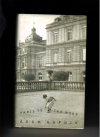
Alan Davidson’s
North Atlantic Seafood

Alhambra Palace

Babettes Feast

Ballymaloe

Being 56

Being in the shade
in the hot sun

Being on the Radio

Bill Bryson’s
Travel Books

Bonne Maman
Apricot Jam
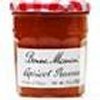
Bookshops

Bridges

Brocantes
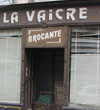
Brothers and Sisters

Buying Furniture

Caitriona’s Photoblog

Clive Nunn’s
Black Limestone Table

Constance Spry

Cooking

Countdown

Crab

Croissants

Dark Chocolate

Daughter Caitriona

Daughter Deirdre

Daughter Eileen

Doing Crosswords

Driving in France

Dromoland Castle

Dublin Bay Prawns

Eating Mayonnaise

Ecco Shoes

Elizabeth David

Fatherhood

Frank Mc Kelvey

Fred Astaire

French Chanson
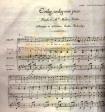
Garbo

Garlic

Getz/Gilberto
Bossa Nova

Gewürztraminer

Gilbert and Sullivan
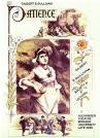
Gin and Tonic
on a Sunday morning

Giovanna Garzoni’s
Food Paintings

Giving Dinner Parties

Griffith Place

Guys and Dolls
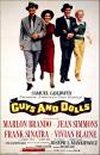
Having Really Short Hair

Hot Gin and Lemon

Hugh Fearnley
Whittingstall

Insomniac Creativity

Internet Clothes
Shopping

Irish Antique Shops

Jacques Brel

James Taylor

Jane Austen

Jane Grigson

Joni Mitchell

Joyce’s Ulysses

Judy Collins

Judy Dench

Julian Barnes

Kate and Anna
McGarrigle
(and all the
Wainwrights,
mostly)

Kir (especially on
an empty stomach)

Lambs Kidneys

Lambs Liver

Lands End Shirts

Le Grand Meulnes
by Alain Fournier

Lemon Tart

Losing Weight

Lucia di Lammermoor

Lyric fm (usually)

Madrigallery

Making Bread

Making Mayonnaise

Marcel Pagnol

Mashed Potato
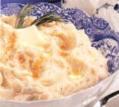
Milo’s
“Smoke Away” Story

Misty Mornings
in France

Monet

My Brothers and
Sisters in Law

My collection of Glass

My Eileen Grey Table

My Electric Convection
Oven

My Grand Nephews
and Nieces

My Green
Gustavsberg Plate

My Mother and
Father in Law

My Old Shagged
Green Corduroys

Nieces and Nephews

Not being Overdrawn

Novels of Dornford Yates

Oklahoma !

Old French Pub Glass

Old Friends

Our Birch Tree

Patricia Wells

Patrick O Brian’s
Aubrey /Maturin novels.
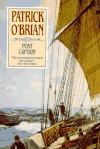
Poached Apricots

Poached Eggs
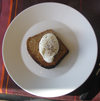
Puns

Rasteau in Provence
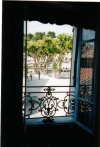
Red Wines from
Southern Rhone

Retirement

Savon d’Alep

Seamus Heaney’s
Clearances

Seven Brides for
Seven Brothers

Shorter Oxford
Dictionary

Sile

Sleep

Smell of Real Tomatoes

Smoked Salmon
with Scrambled Eggs

Stem Ginger in Syrup

Some Like it Hot

Sunday Miscellany
(Sometimes)
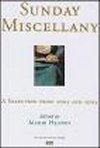
Sunday Observer

Swimming Pools

Theatre Antique d’Orange

The (English) Independent

The Antiques Roadshow

The end of Winter

The Good Food Guide

The Magic Flute

The Marriage of Figaro
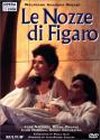
The New Yorker

The Smell of Turf Burning

The Weekend
(Since Retiring)

Three Rivers of France
by Freda White

Tom Lehrer

Under Milk Wood

Waterford Market
Jenkins Lane

W.B. Yeates;
Song of the
Wandering Aengus

White Bowls of Coffee

White Burgundy

White Peaches

Wild Strawberries

Writing on the Computer

Post Scriptum April 12th
2 Lists have been sent in
One from Michael:
Ciaran MacMathuna’s radio programme
Manzilla Vinicola Hidalgo s.a. (chilled)
Kate Bush
The dried leaves and seeds of the cannabis sativa plant
Live music
Jack Nicholson
Asparagus (Madhur Jaffey’s recipe)
Iris deMent
Woody Allen’s earlier funny films
The Kilfenora Ceili Band
Helen Hunt
Woody Allen’s later unfunny films
James McMurtry and the Heartless Bastards
The English Market
Alison Kraus
and one from Leopold Bloom:
Gorgonzola
Nutty Gizzards
The novels of Paul de Kok
Mollie Bloom
Lemon-scented soap
Millicent Bloom
Medical students of good breeding
Kidneys
Keep them coming folks!
There is plenty of room for more.
3 comments
The Song of Old Lovers
March 31, 2005
10:37 AM
La Chanson des Vieux Amants
The first Jacques Brel song I ever heard was “La Chanson des vieux Amants” This was in ’68 or thereabouts and it was on Judy Collins “Wildflowers “ album (or indeed L.P. as we called them then, and as I still do, occasionally, to my children’s hilarity.)
I instantly loved it.
I still have the album and am still moved by the song. I learned the words, more or less, phonetically, from Judy’s version and at moments of reverie have been known to start singing the same for no apparent reason.
A couple of years ago, in a Nouvelles Galleries, I was waiting outside a dressing room for Sile to try on some clothes. (I do this quite often so can no longer remember what town in France we were in)
The background music slowly crept into my subconscious and I began to realise that I knew the tune. I was charmed to recognise it as the same “Chanson” and was transported as my version of the the words came flooding back to me. When Sile came , at last, out of the dressing room she shot me an embarassed look. “ What did you think you were doing!” she said.
It appears that all unbeknownst to my self I had been singing away the words of the song like some weird in-store kareoke artist,and embarrasing both of us in the process. My principal cause of embarrasment was the knowledge that I had been singing, and out loud, my own phonetic version of the song. Other than realising that it was a love song of sorts I had never bothered to ponder the meaning of the words let alone translate them into English.
As soon as I got back to Ireland I decided that, if I was going to spend my declining years singing Jacques Brel songs in department stores I could at least do him the justice of singing the correct words. The blessing of the Internet gave me access to the these and furthermore I even found an English translation but one I didn’t like at all.
Nothing daunted I got out Dictionaries and Thesauri and eventually came up with my own translation, not brilliant I know, and I only managed the first verse and the chorus ( and even that took me ages) but it does sing reasonably well and at last I got to understand exactly what the words were about. (and to know the words of this song is to love it more.)
The original and my attempt of translation of same follow, who knows if you hang about ladies changing rooms in provincial France you may even get to hear me sing it too.
La Chanson des vieux amants
Bien sûr, nous eûmes des orages
Vingt ans d’amour, c’est l’amour fol
Mille fois tu pris ton bagage
Mille fois je pris mon envol
Et chaque meuble se souvient
Dans cette chambre sans berceau
Des éclats des vieilles tempêtes
Plus rien ne ressemblait à rien
Tu avais perdu le goût de l’eau
Et moi celui de la conquête
Refrain :
Mais mon amour
Mon doux mon tendre mon merveilleux amour
De l’aube claire jusqu’à la fin du jour
Je t’aime encore tu sais je t’aime
The Song Of Old Lovers
(translation dedicated to Sile )
Of course we’ve lived through stormy weather
With foolish love for twenty years
We’ve packed to go yet stayed together
And battled on through all the tears
Yet all the trappings of our past
That lie within our childless room
Bear scars of wars long finished
The winner now is often last
And simple things don’t lift our gloom
But if we loose we’re not diminished
Chorus:
And Oh My Love
My soft and tender sweet amazing love
From break of day until stars shine above
I love you still, you know I love you
2 comments
The Last Time I Saw Paris
March 30, 2005
17:35 PM
The last time I saw Paris
The trees were dressed for Spring
And Lovers walked beneath those Trees
And Birds found songs to sing.
All fair enough you may say (and this comes from a self confessed Francoholic) but last week was really the first time either Sile or I had spent more than a brief overnight stay in Paris.
We have avoided Paris carefully during the last 30 years of our travelling to and from France.
Probably this is because we have travelled mainly by car, and, been so terrified of the reputation of the Parisian Motor-Boulevardier that we have even attempted U turns on the auto-route when misreading of the road signs have taken us towards Paris.
On the one occasion when we had to travel around the Peripherique we had got hopelessly lost but the day had been miraculously rescued when we had found ourselves, still lost, outside our first Ikea.
We had immediately abandoned all hope of reaching our destination and had spent the next several hours and also several (hundred)euro inside.
This Easter Paris seemed the obvious place to go.
Stuffed to the beam ends with Air France vouchers (cf “What we did on our Holidays”) we could manage a cheap holiday only by flying somewhere where a car would be non-essential.
In Paris a car is not just non-essential, it is to be avoided at all costs.
We found Jacques and Nathalie Seguin on the internet. They had some small apartments to rent in central Paris, these had fairly basic cooking facilities, and one, a ten minute metro from the centre, in Vincennes, which seemed perfect.
Hotels are only used for emergencies in the Dwyer Travel Experience.
This flat also had a convertible sofa in the living room, (cue daughter Eileen and her friend Joanne to come too.) a little hotel next door (cue friends Isabel and Paul to come up from Annecy for the week end)as well as the obligatory (for me) kitchen with cooker etc.
It did turn out to be a little stunner, (you can see it if you click here) Beautiful polished wood floors, nice antique touches and truly all complete and beautifully planned.
It was, as French Franglais would have it, “cosy”.
The direct “Anglish “ translation might be “bijou”.
Cats, as they say, should not be swung.
For those of you who suffer, like I do, from etymologitis , the cat in question, in the origin of that phrase, was not our dear Felix –why on earth would we want to swing him- but the “cat-o-nine-tails” with which the royal navy used to impose discipline.
Apparently you needed some space to achieve the requisite back swing.
I may not have mentioned already that first daughter Caitriona with Aonghus, the recently affianced, were lucky enough to have been given a present of a weekend in Paris by Aonghus’s uncle and had decided to make Easter in Paris their theme too.
The significance of the cat swinging may be coming apparent.
Jacques scored very high marks by being there in the flat to greet us when we arrived, by having a bowl of fresh flowers on the table, and by having basics like olive oil and vinegar, salt and pepper installed.
Vincennes is a fine suburb, has a super Donjon, and a plentiful supply of small Jewish food shops which are therefore open on Sundays.
The weather for the first few days was also a credit to Jacques.
We wandered along the Isle de la Cite and through the Tuileries in beautiful sunshine.
The buildings of Paris are things of great beauty and all seemed lived in. Search any floor, even in the very centre, and each window will have a well maintained window box. Glance at the windows of the Immobiliers and you will see that behind many of these renaissance facades there exist sumptuous apartments of Grande Luxe some having interior gardens and even swimming pools.
The town was crowded. Not so much with Americans, although they were present, (quieter than they had been pre-Iran)but with Italians, Spanish and (one guessed) provincial French.
The Louvre was out of the question, unless one was prepared to queue for several hours, ditto Notre Dame, ditto (and this both surprised and disappointed) the Impressionists in the Quay d’ Orsay.
Exterior Paris is not to be sniffed at however,and it must be the most marvellous town to window shop in. From the galleries and boutiques around Boulevard St. Germain to the department stores on Boulevard Haussman you can visually shop until you drop.
Window shopping is also not such a bad idea if you want to remain solvent as Paris is expensive, the restaurants and bars, the cafes and the boutiques are certainly no cheaper than, and often a lot dearer than they would be in Dublin, mind you the quality of design is also often superb.
You can eat cheaply, even if not terribly well, at Asian take aways, and food in shops is cheaper, and in some cases of much better quality than it is at home so self catering like we did does save money.
If you have done your sums you will by now have realised that it was as a sometime party of 8 that we crocodiled around the city. Not often though. We tended to meet up in groups and managed to feed most of us in the apartment most of the time, and, even more importantly, managed to do a fair amount of our social drinking there. The difference of the cost of wine in a supermarket and a bar is quite a lot and if you tend to drink wine at the rate we do, drinking, chez nous is a huge saving of money.
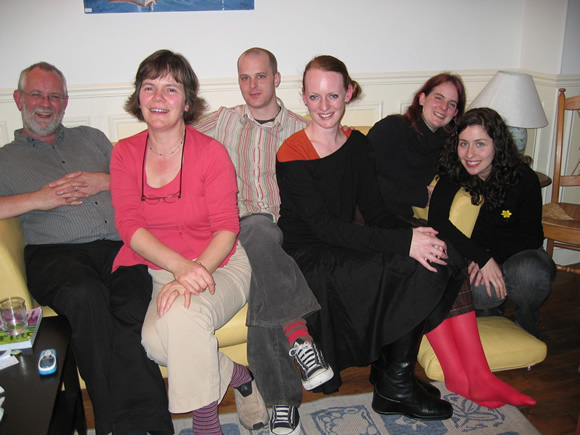
Six of the eight of us in the flat in Vincennes
The one place into which we managed to get without queuing (and that that on Easter Monday morning) was the spectacular La Defense.
This is the newest landmark building in Paris and is built like two Arc de Triomphes’ one inverted on top of the other leaving a hole in the middle .It is on a direct visual line with the Arc itself and has an avenue of some quite spectacular buildings leading to it along the Esplanade de la Defense.
You climb to the top by lift which looks as if it is casually slung into the middle of the hole with some scaffolding.
After a terrifying rise you arrive into a strangely ad hoc and casual area on top. It has an art exhibition going on, some toilets, indicated by some casual paper directions, some extremely inaccurate directions to viewing points , a very down market restaurant where the head waiter (or was he the chef?) hugged me as he was asking me how I enjoyed the food, (thereby depriving me of all my French.)
I loved it all, even the tatty souvenir shop where I should have bought the Eiffel Tower pencil parer but didn’t.
It did have an aerial view of the whole of Paris from the top which was well worth the terrors of the lift trip and the €7.50 entrance ( if not the hug.)
Another highlight of Paris was going down an escalator somewhere in the metro and seeing a familiar red head ascend another escalator just by us. What exactly are the chances of bumping into ones daughter in the centre of Paris at Easter ?
Next time we go, and we will, we will go back to one of Jacques’ flats and we will go on such an off season moment that we will stroll into all the galleries and museums we could desire without queuing.
Best city ever was my judgment, but still a city.
|
